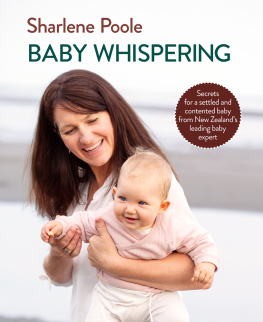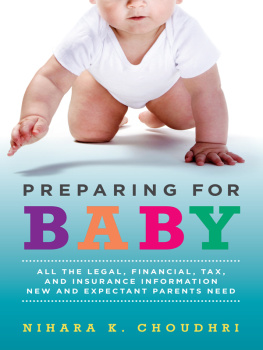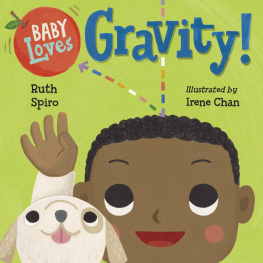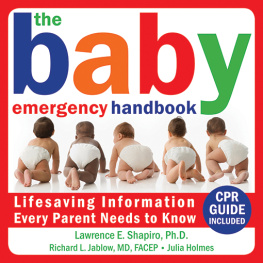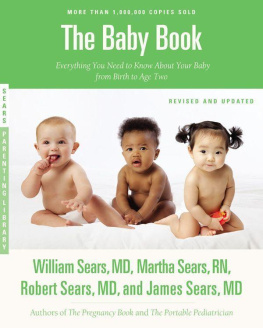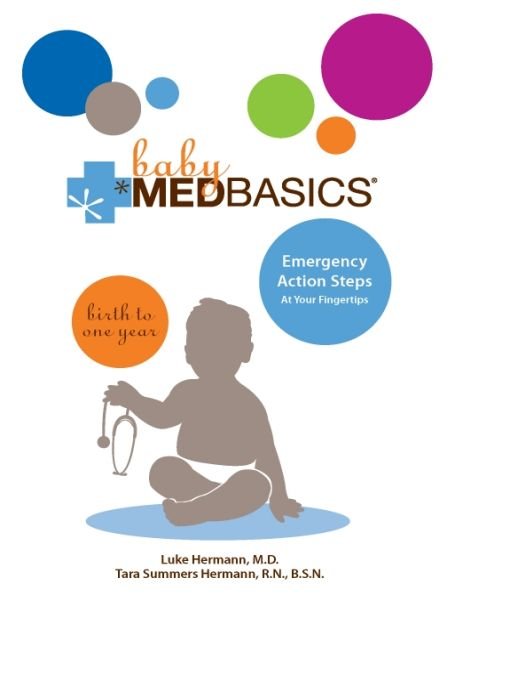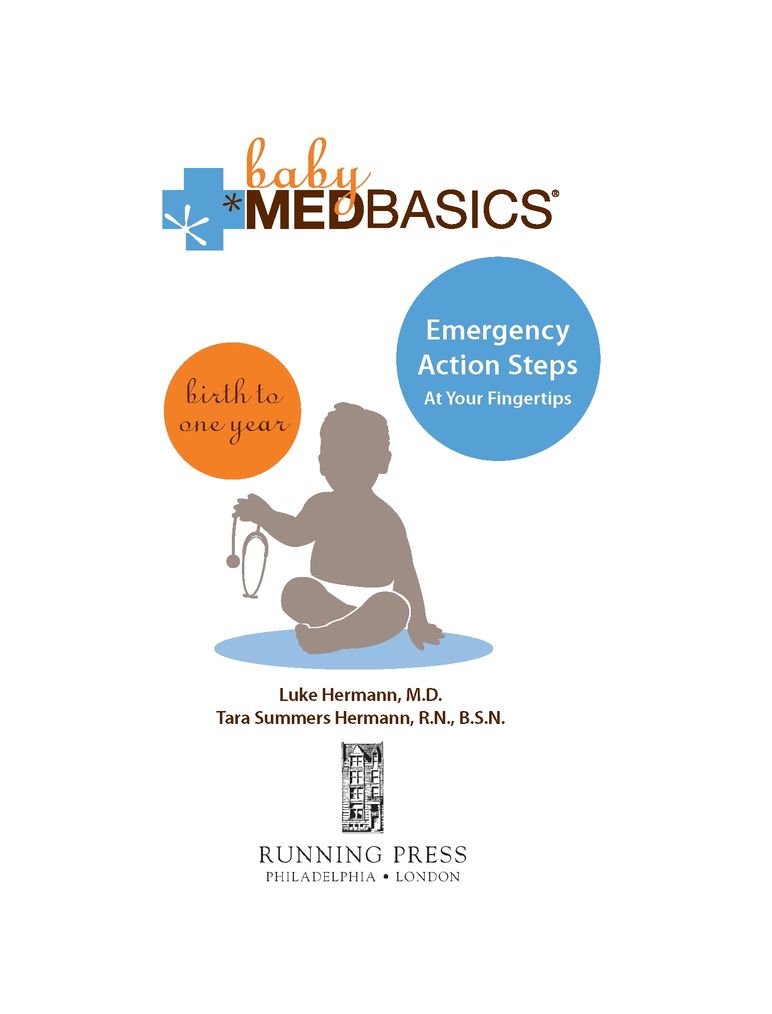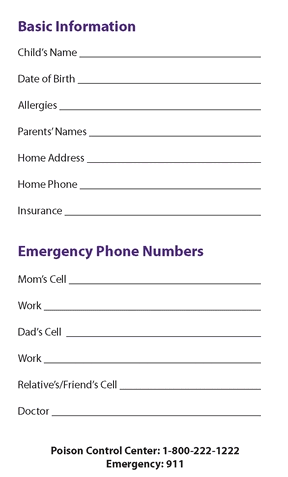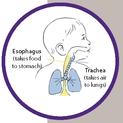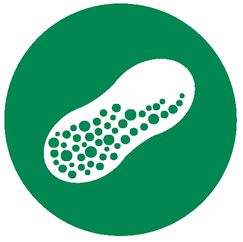Table of Contents
for Nicholas, Oliver Beckett, and Vivienne
for parents and caregivers everywheremay you respond reliably when your child needs you most.
Preparing for an emergency: what to do
Take an infant first-aid and CPR course.
Personalize your babys first-aid kit:Infant acetaminophen (Tylenol) and ibuprofen (if baby is older than 6 months)
Rectal thermometer and petroleum jelly for lubrication
Small latex-free bandages, gauze (pads and rolls), scissors, tape, ice pack
Extra prescription medication or EpiPen (if prescribed)
Small toy for baby to play with while youre giving treatment
Make sure your babys medical information is current:A list of emergency phone numbers
Your babys medical history
Insurance information
Know where your Baby MEDBASICSguide is located and take it with you wherever you go.
What should you include in your babys medical history?
Immunization records
Medications your baby is currently on or has recently taken
Allergies to medication or food
Pre-existing illnesses
Surgeries, procedures, and hospitalizationswhen and why
Information about your babys birth (preterm or birth complications)
SIDS (Sudden Infant Death Syndrome) basics
SIDS is the leading cause of death for babies one month to one year of age. Because as many as 90% of SIDS deaths are caused by unsafe sleep practices, it is important that you and everyone who cares for your baby consistently follow SIDS prevention guidelines.
SIDS prevention
Make sure everyone putting your baby to sleep knows to place him on his back, not his belly or even his side. Everyone, every time.
Your babys crib should be safety approved with a firm mattress and fitted sheet.
Remove bumpers, blankets, pillows, and toys from the crib.
Babies should sleep in a crib separate from siblings and parents.
Dont overdress your baby. Use a sleep-sack instead of blankets.
Offer a pacifier at naptime and bedtime throughout the first year of life.
Provide daily tummy time, which helps strengthen neck muscles.
For more information on SIDS,
visit www.Firstcandle.org.
CABS the basics
The 2010 American Heart Association Guidelines recommend a CAB sequence, replacing the previous ABC sequence.
During an emergency you can easily remember what you need to do by using the mnemonic CAB. First check Circulation, followed by Airway and finally Breathing.
C is for Circulation
Circlulation refers to the blood that is pumped by the heart first into the lungs and then to the rest of the body. Blood carries oxygen and nutrients the body needs. If the heart stops pumping, blood flow to the lungs and body stops and the body cannot survive.
When the heart stops beating, performing chest compressions helps pump blood to the brain and other vital organs.
A is for Airway
The airway is the passage that connects the mouth to the lungs. For air to enter the lungs, the airway must remain clear. If it becomes blocked, airflow into the lungs will stop.
Before you can help your baby breathe you must be certain that the airway is not blocked.
B is for Breathing
The lungs perform the job of breathing. With each breath, air travels through the airway into the lungs. This air contains oxygen, which is transferred to blood cells in the lungs, and then carried to the rest of the body. If airflow into the lungs stops, no oxygen gets into the bloodstream.
In an emergency, breathing into your babys mouth and nose will help supply her with the oxygen she needs.
Prevention
Use hypoallergenic soap, lotion, and laundry detergent.
Introduce new foods slowlyone every 3 to 5 days.
If you know your child has a serious allergic reaction (anaphylaxis), always carry an epinephrine auto-injector, commonly known as an EpiPen (available by prescription).
ALLERGIES
Allergic reactions are most often the result of an inappropriate activation of the bodys immune system. Normally your childs immune system helps protect her by fighting bacteria and viruses. However, when her immune system is exposed to substances shes sensitive to, it overreacts and tries to fight seemingly ordinary things like peanuts, medications, or dander from a pet, creating an allergic reaction.
When an allergic reaction is triggered, chemicals that cause inflammation, including histamine, are released. If these chemicals are released only into the tissue they will cause a local or mild reaction with swelling and irritation of the affected area. If the chemicals enter the bloodstream, the result may be a generalized or severe reaction, affecting multiple organ systems at once. If your baby suffers from an allergic reaction, open the book to this section, and well walk you through what to do.
ALLERGY basics
Allergic reactions are most often caused by insect stings, food products, or medications, though almost any substance can act as a trigger depending on the individual child.
Common Allergy TriggersVenom from insects including bees, wasps, and hornets
Foods including eggs, milk, peanuts, wheat, and soy
Medications including antibiotics (such as penicillin), aspirin, ibuprofen
Latex from balloons, medical products, or sports equipment
Dander from cats, dogs, or horses
How to recognize
Depending on the type of trigger and the severity of the reaction, symptoms from an allergic response can affect almost any organ system and may be either localized (one area) or generalized (affecting the body as a whole). If you think your baby may be having an allergic reaction but arent sure, look for the following signs and symptoms.
Mild Allergic ReactionSkin: itching, limited rash
Eyes: itching, tearing, swelling of eyelids
Nose and Mouth:seezing
Severe Allergic Reaction (anaphylaxis)Skin: itching, generalized hives (rash)
Nose and Mouth: selling of lips or tongue, changes in the sound of your babys voice or cry
Lungs: wheezing, difficulty breathing
Circulation: becomes weak or unresponsive



